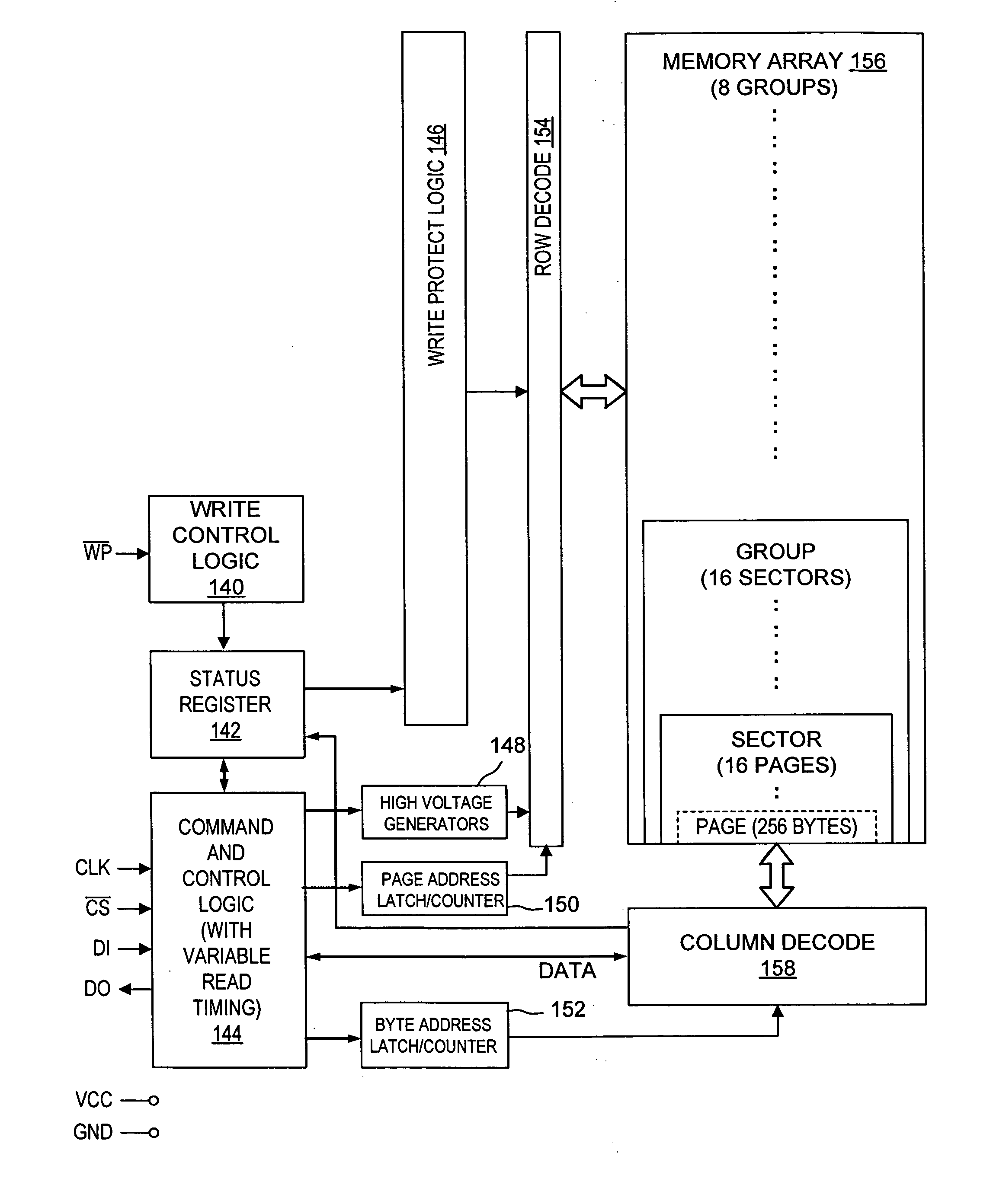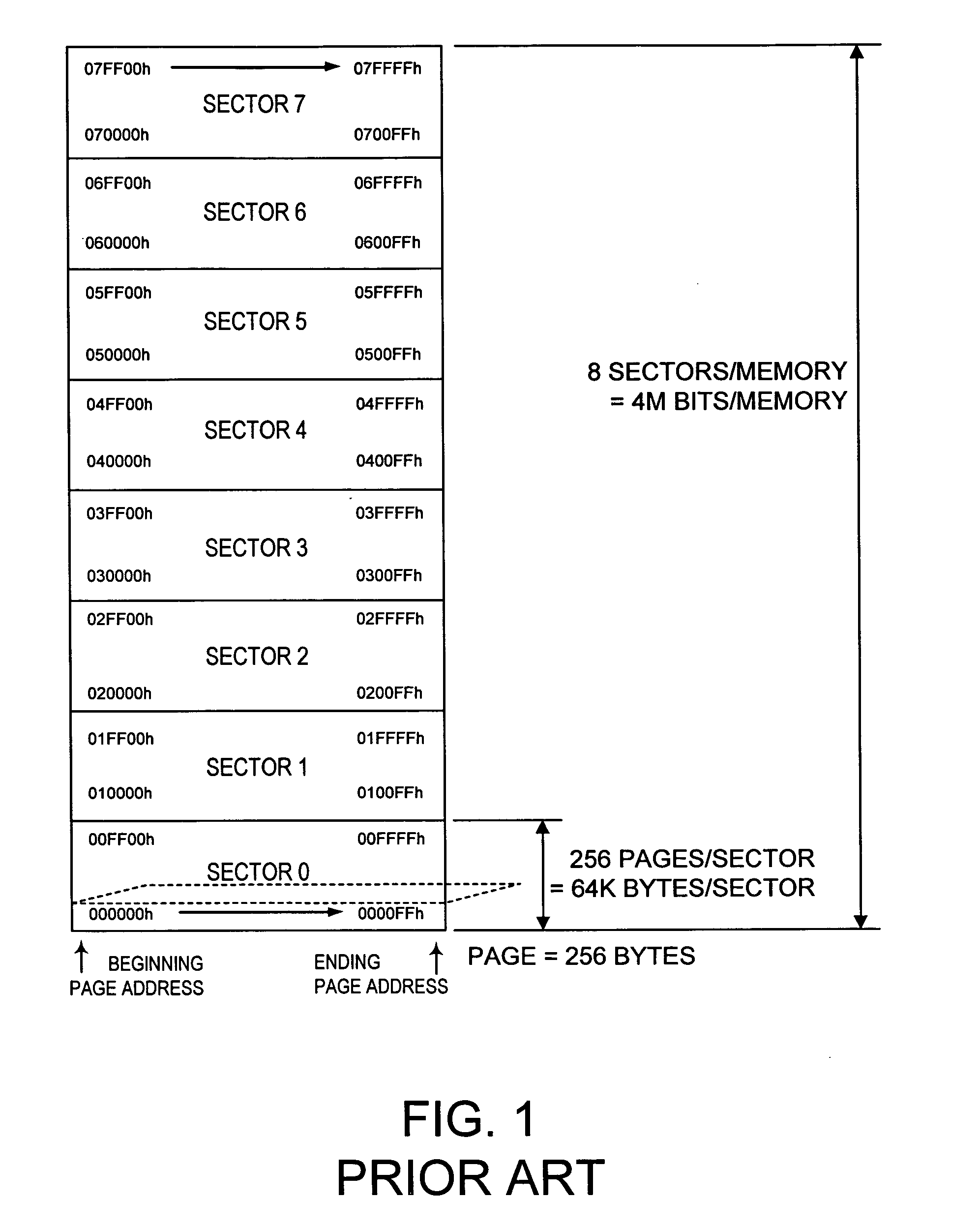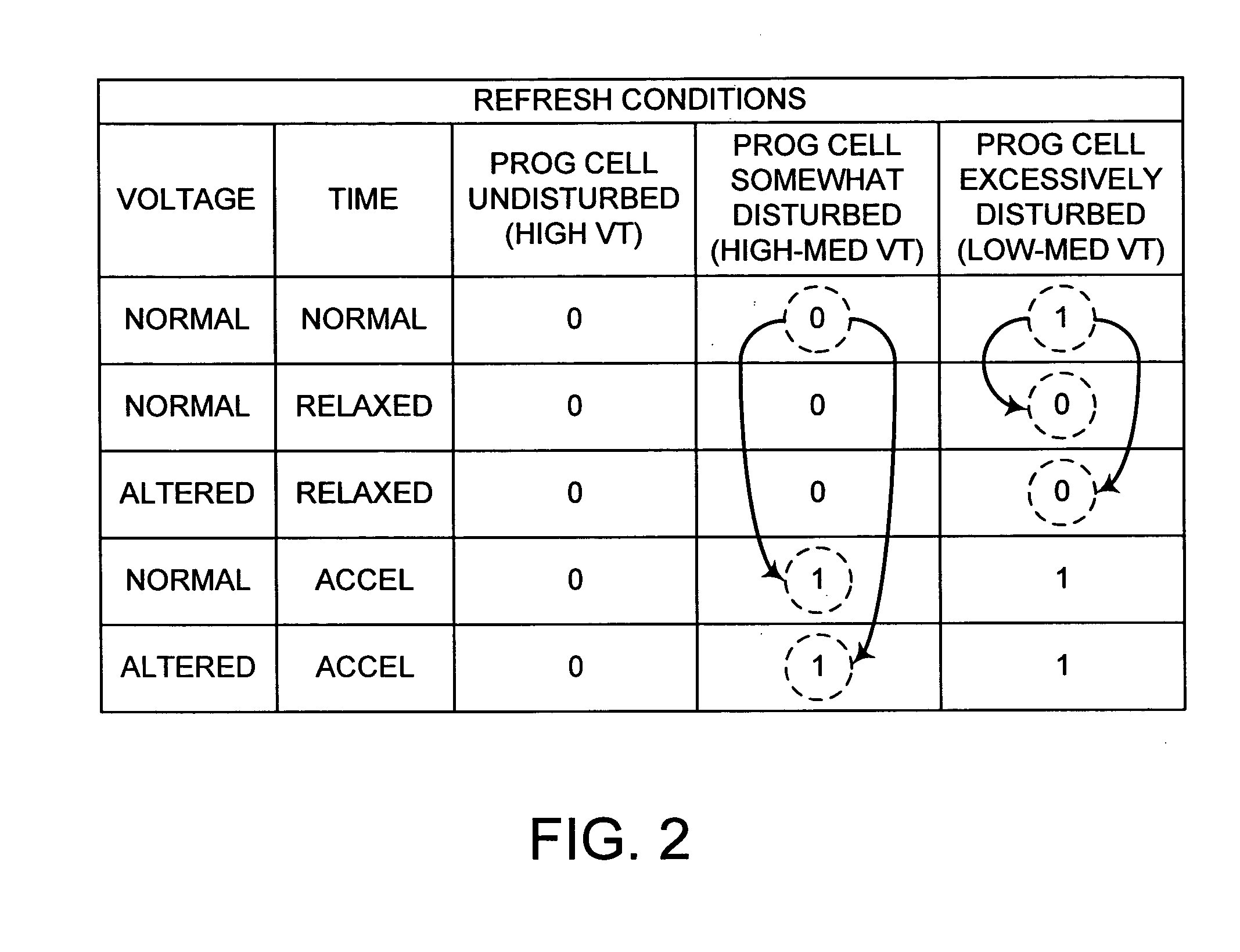Small sector floating gate flash memory
a floating gate flash memory and small sector technology, applied in static storage, digital storage, instruments, etc., can solve the problems of large die size penalty, impose overhead expense, and affect the original benefit of the particular p-well, so as to achieve the effect of sacrificing the original benefit and small sector siz
- Summary
- Abstract
- Description
- Claims
- Application Information
AI Technical Summary
Benefits of technology
Problems solved by technology
Method used
Image
Examples
Embodiment Construction
[0042] To control the problem of program and erase disturb in flash memory arrays having multiple sectors of cells grouped in each isolated P-well, a refresh procedure is used that involves two readings of each of the cells in a “refresh area” of a group under different read timing conditions, with other read conditions being constant or varied as desired. Cells that yield the same result in both reads are not excessively disturbed and need not be reprogrammed. However, cells that read differently may be excessively disturbed and should be reprogrammed. The refresh procedure is particularly suitable for memory arrays with small sector size and many sectors per group. The memory arrays preferably incorporate memory cells that use hot electron programming and Fowler-Nordheim erase, and are arranged in a suitable flash architecture such as the well-known NOR common ground architecture or the well-known alternate metal virtual ground architecture. A suitable type of memory cell structur...
PUM
 Login to View More
Login to View More Abstract
Description
Claims
Application Information
 Login to View More
Login to View More - R&D
- Intellectual Property
- Life Sciences
- Materials
- Tech Scout
- Unparalleled Data Quality
- Higher Quality Content
- 60% Fewer Hallucinations
Browse by: Latest US Patents, China's latest patents, Technical Efficacy Thesaurus, Application Domain, Technology Topic, Popular Technical Reports.
© 2025 PatSnap. All rights reserved.Legal|Privacy policy|Modern Slavery Act Transparency Statement|Sitemap|About US| Contact US: help@patsnap.com



